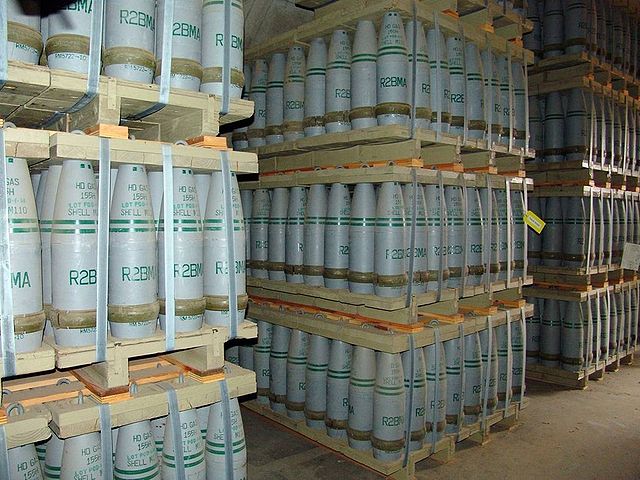A huge new report from the New York Times examines how the U.S. military and government systematically mishandled and covered up pre-1991 chemical weapons found in Iraq after the 2003 invasion.
Thousands of chemical weapons were eventually found in Iraq after the invasion, only they were all from the stockpiles the West had provided before Saddam Hussein got on their bad guy list, so the Bush Administration suppressed the discoveries (and dangers to troops) to avoid embarrassment, since it wasn’t an active and rogue program after all, and they didn’t want to admit our troops were being harmed by US-designed/European-made chemical weapons.
The New York Times found 17 American service members and seven Iraqi police officers who were exposed to nerve or mustard agents after 2003. American officials said that the actual tally of exposed troops was slightly higher, but that the government’s official count was classified.”
Because the aging weapons actually supported the case that no new weapons had been produced after 1991, the information was concealed from ground troops who weren’t expecting to stumble on them, military doctors trying to treat the troops, Congress, and everyone else. Troops were regularly ordered to deny having found active sarin and mustard weapons, and medical staff were so unprepared to handle cases that they often tried to deny exposure had occurred. One sergeant even had to look up his symptoms online to confirm it had been mustard gas. That lack of attention has continued.
Prompted by the Times reporting, the Army acknowledged that it had not provided the medical care and long-term tracking required by its chemical exposure treatment guidelines. It said it would identify all troops and veterans who had been exposed and update and follow their cases.
The main area of remaining caches fell to ISIS earlier this year; though the weapons are generally unusable in intended form they have previously been repurposed successfully by insurgents in roadside bombs and booby traps.

Pallets of 155 mm artillery shells containing “HD” (distilled sulfur mustard agent) at Pueblo Depot Activity (PUDA) chemical weapons storage facility. (Credit: US Army via Wikipedia.) Similar shells, made in Europe before the first Gulf War, were found in Iraq by US forces.


